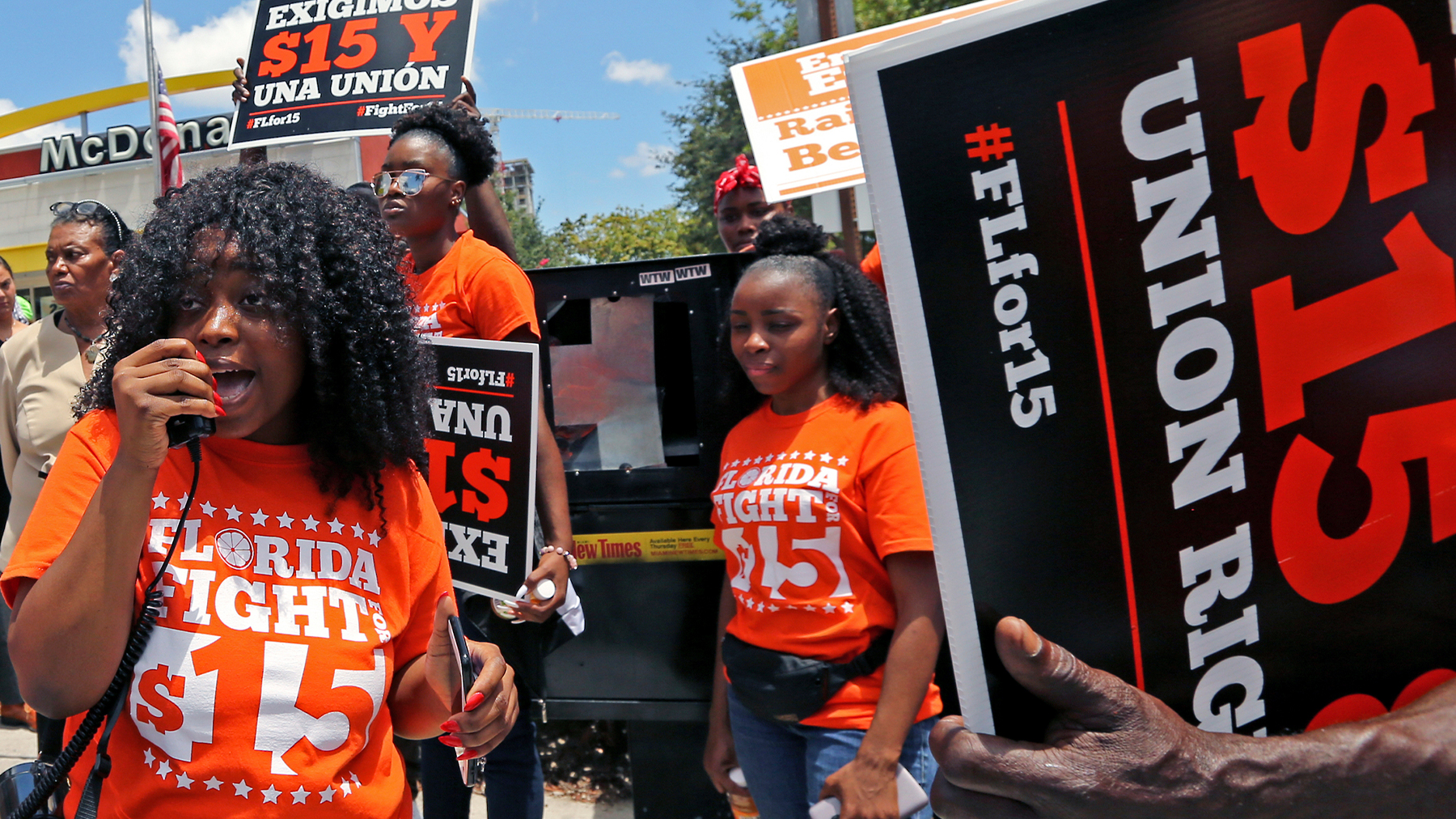A proposed initiative to raise Florida’s minimum wage to $15 an hour by 2026 is gathering momentum and is almost certain to be on the state’s ballot when voters go to the polls to choose a president in 2020.
The political committee Florida for a Fair Wage announced last week that the campaign has finished collecting the signatures it needs for ballot consideration and should reach all the requirements before the February deadline.
The SPLC Action Fund also announced it was joining the campaign to help pass the initiative.
If the constitutional amendment is approved by voters, the state’s minimum wage would increase to $10 an hour on Sept. 30, 2021, and rise $1 each year until it hits $15 in 2026. After that, it would increase every year at the rate of inflation.
The bump in pay for low-wage workers would set Florida far apart from other Southern states. Florida ($8.46) and Arkansas ($9.25) are the only states in the South that have adopted a minimum wage higher than the federal version of $7.25.
Currently, Washington, D.C., has the highest minimum wage in the country, at $14. Three states – Massachusetts, Washington and California – are second at $12.
An increase is already popular among Florida voters. A Quinnipiac University poll in June found that 76 percent of voters support an increase from the current $8.46 an hour.
That shouldn’t come as much of a surprise. Most of the existing research on minimum wage increases points to favorable results for low-wage employees, as well as improved work productivity and the overall well-being of workers.
In July, the U.S. House of Representatives voted to raise the federal minimum wage from $7.25 to $15 an hour by October 2025. If enacted, according to an analysis by the Congressional Budget Office (CBO), 17 million workers would see an increase to $15 an hour, and roughly 10 million more would see slightly higher wages above the proposed minimum.
The CBO also estimates that the $15 wage would lead to 1.3 million lost jobs nationwide by 2025. But a growing body of research suggests that minimum wage hikes do not necessarily lead to the loss of low-wage jobs, as opponents in Florida and elsewhere invariably claim.
One recent study analyzed 138 state-level minimum wage increases over roughly four decades and found that the overall number of low-wage jobs remained essentially unchanged years after increases of varying degrees.
“Our research is able to tease out whether there are different effects from much larger minimum wage increases, and what we found is after a much larger minimum wage increases, you do see workers’ wages rise even more, but you also don’t see any kind of change in overall employment for low-wage workers,” said Ben Zipperer, an economist at the Economic Policy Institute and one of the authors of the study. “So even [with] larger increases, at least in our study sample, you don’t result in the kind of scare stories we often hear about minimum wages.”
At the federal level, the minimum wage hasn’t been raised since 2009, the first year of the Obama administration. During that time, the real value (adjusted for inflation) of the minimum wage has declined by 17 percent.
In 2004, Florida voters approved a ballot measure to raise the minimum wage from $5.15 – the federal floor at the time – to $7.40 by 2006 and then annually each year based on the consumer price index. Afterward, one report found strong job growth, as opposed to the predictions of job losses by opponents.
If another increase is approved by voters, according to a report from Florida International University’s Center for Labor Research and Studies, workers in the state’s leisure and hospitality industry could see the biggest gains. That sector currently employs more than 1.3 million people and has had the lowest average hourly wage among other industries since 2009.
The increase would herald a historic shift in labor policy in the South.
According to EPI’s Minimum Wage Tracker, only seven states have no minimum wage law at all or a wage set below the federal minimum. Six of those are in the South. The federal minimum wage still applies in those states.
“That there’s likely going to be a very ambitious minimum wage proposal on the ballot is a tremendous development in terms of labor policy in the Southeast,” said Zipperer. “For many decades, labor policy or the lack of labor regulation in the South has been suppressing wages, and oftentimes suppressing wages for people of color, or in ways that disproportionately affect people of color, like the minimum wage. I think it would be a tremendous turn for the better if we saw that change.”
Photo by AP Images/David Santiago



